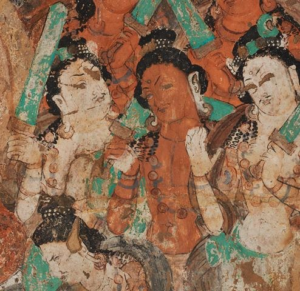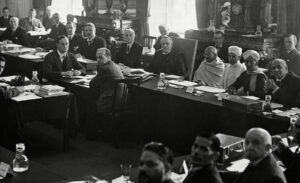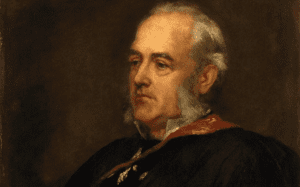
Kashmir, nestled in the lap of the Himalayas, was once a flourishing cradle of Indian civilization. It was a bastion of Hinduism and later a major center of Mahayana Buddhism. For centuries, it was known for its scholarly pursuits, cultural richness, and religious pluralism. But beginning in the 14th century, the region underwent one of the most systematic and brutal transformations in the Indian subcontinent. From Islamic invasions to modern-day insurgency, Kashmir has seen waves of religious persecution, temple destruction, forced conversions, and demographic shifts. These culminated in the 1990 exodus of Kashmiri Hindus, marking a tragic chapter in the region’s history.
Pre-Islamic Kashmir: A Center of Indian Civilization
Before the onset of Islamic rule, Kashmir was renowned for its vibrant intellectual and spiritual traditions. The region was home to schools of Hindu philosophy, particularly Shaivism, and was deeply intertwined with Vedic practices. It also became an important hub for Buddhism, especially under the Kushans and later the Karkota dynasty, which supported Nalanda-style monastic universities. Thinkers like Abhinavagupta elevated Kashmiri Shaivism to philosophical heights, influencing Indic traditions across the subcontinent.
Temples like the Martand Sun Temple stood as architectural marvels, reflecting the syncretic and sophisticated culture that once defined Kashmir.
The Islamic Conquest: The Beginning of a Dark Age
The arrival of Islam in Kashmir was not peaceful. In the 14th century, Shah Mir became the first Muslim ruler of Kashmir, establishing the Shah Mir dynasty. What followed was a series of deliberate and violent efforts to Islamize the region.
Sultan Sikandar “Butshikan”: The Iconoclast
Sikandar, often referred to as “Butshikan” (destroyer of idols), ruled from 1389 to 1413. His reign is remembered for systematic destruction:
- Temples were razed to the ground.
- Sacred Hindu texts were burned.
- Non-Muslims were given the choice: convert, flee, or die.
- The famous Martand Sun Temple was destroyed during this period.
According to contemporary records and later historians, thousands of Hindus and Buddhists either converted to Islam under duress or were killed. Those who fled sought refuge in the plains of northern India.
Later Periods of Religious Repression
Even after the decline of the Shah Mir dynasty, religious intolerance persisted. Under the Chak dynasty and subsequent Mughal control, the policy of Islamization continued.
Forced Conversions and Jizya
- The imposition of Jizya (a tax on non-Muslims) made life economically unsustainable for Hindus.
- Periodic waves of persecution and forced conversions ensured that the demographic shift continued steadily over centuries.
By the time the Mughals annexed Kashmir in the 16th century, the valley had a Muslim majority, a transformation that had taken less than two centuries.
The Sikh and Dogra Interlude
The Sikh Empire under Maharaja Ranjit Singh took control of Kashmir in 1819. Though Sikhs were relatively tolerant, they too taxed Muslims heavily and treated them as a conquered population.
In 1846, the British handed over Kashmir to the Dogra ruler Gulab Singh as part of the Treaty of Amritsar. Under the Dogras, there was a revival of Hindu cultural identity, but the Muslim population remained politically and economically marginalized.
1947 Partition and the Jammu Massacres
The partition of India in 1947 caused unprecedented violence, and Kashmir became a key flashpoint. Maharaja Hari Singh, a Hindu, hesitated to join either India or Pakistan, leading to political chaos.
The Tribal Invasion
- In October 1947, Pakistani tribal militias invaded Kashmir.
- They committed atrocities against Hindus and Sikhs in regions like Baramulla and Muzaffarabad.
- Women were raped, temples were destroyed, and thousands were killed or abducted.
Hari Singh acceded to India, prompting the First Indo-Pak war. Meanwhile, in Jammu, a horrific massacre took place:
Jammu Massacres (October-November 1947)
- Hindu and Sikh mobs, allegedly with the backing of the Maharaja’s forces, killed an estimated 20,000 to 100,000 Muslims.
- This was a retaliatory pogrom following the attacks on Hindus in the valley.
The 1947 violence was a watershed moment. It set the stage for decades of religious and ethnic strife in the region.
Rise of Islamic Extremism in the 1980s
By the late 1980s, discontent among Kashmiri Muslims, fueled by political manipulation and foreign influence, gave rise to a separatist insurgency. Armed groups began targeting symbols of Indian authority, and eventually, Kashmiri Hindus became the scapegoats.
Targeted Assassinations
- Prominent Kashmiri Hindu figures like Tika Lal Taploo and Justice Neelkanth Ganjoo were assassinated.
- Hindu homes were marked, and loudspeakers blared messages demanding their exodus.
The slogan “Raliv, Galiv, ya Chaliv” (Convert, Die, or Leave) echoed through the valley.
The 1990 Exodus of Kashmiri Hindus
By January 1990, the situation reached a breaking point. Islamist groups such as Hizbul Mujahideen and JKLF orchestrated a terror campaign. Over the course of a few weeks:
- Nearly all of the estimated 100,000-150,000 Kashmiri Pandits fled.
- Their homes were looted or taken over.
- Temples were desecrated and destroyed.
Displaced families lived in refugee camps in Jammu and Delhi, facing abysmal living conditions. The government offered little support, and the issue faded from national discourse for decades.
Massacres in the 1990s
Islamist violence against Hindus didn’t end with the exodus.
1993 Kishtwar Massacre
- Muslim militants killed 16 Hindu bus passengers in the Sarthal area.
1998 Prankote Massacre
- Militants beheaded 29 Hindus, including women and children, for refusing to convert to Islam.
These attacks extended the conflict to the Jammu region, demonstrating that the ethnic cleansing was not limited to the Kashmir Valley.
Destruction of Religious and Cultural Heritage
Cultural erasure accompanied physical violence. Temples, shrines, and libraries were targeted:
- In 1986, over 200 temples were destroyed or desecrated during a wave of riots.
- Ancient religious sites were converted into mosques or left in ruins.
This destruction was systematic, aimed at wiping out the region’s Hindu-Buddhist legacy.
Political Apathy and Media Silence
Despite the scale of the tragedy, the plight of Kashmiri Hindus received little sustained attention:
- Mainstream media downplayed the violence.
- Successive governments failed to rehabilitate displaced families.
- Pandits remain refugees in their own country, with limited right of return.
The lack of justice or acknowledgment has only deepened the wounds of the affected communities.
The 21st Century: Hope or Repetition?
In August 2019, the Indian government revoked Article 370, removing Jammu and Kashmir’s special status. Supporters argued that it would pave the way for integration and justice. Critics claimed it was unilateral and authoritarian.
As of 2025, the situation remains complex:
- Resettlement plans are underway but face local resistance.
- Terrorist threats and targeted killings continue to occur.
- Cultural revival efforts are limited in scale and impact.
A Civilization Erased, A Memory That Must Endure
The story of Kashmir is not just one of geopolitical strife. It is a tale of civilizational collapse brought on by centuries of persecution, violence, and erasure. The destruction of temples, forced conversions, and the exodus of indigenous communities like the Kashmiri Pandits are not isolated events but part of a long, brutal history.
This history must be told, not for vengeance, but for memory. Because a people without memory are a people without a future. And Kashmir, once the crown jewel of Indian civilization, deserves to be remembered in full & not just in fragments, and not just through a political lens, but as a human tragedy of enormous scale.
Bibliography
- Bamzai, P. N. K. Culture and Political History of Kashmir, M.D. Publications Pvt. Ltd.
- Kalhana. Rajatarangini: The River of Kings, translated by Aurel Stein.
- Pandit, Rahul. Our Moon Has Blood Clots: The Exodus of the Kashmiri Pandits, Penguin Books India.
- Kaul, Shonaleeka. The Making of Early Kashmir: Landscape and Identity in the Rajatarangini, Oxford University Press.
- Aggarwal, Ravina. Beyond Lines of Control: Performance and Politics on the Disputed Borders of Ladakh, India, Duke University Press.
- Tikoo, S. L. Kashmir: Its Aborigines and Their Exodus, Lancer Publishers.
- Raina, Mohini Qasba. Kashur The Kashmiri Speaking People: Analytical Perspective, Trafford Publishing.
- Wikipedia contributors. “Exodus of Kashmiri Hindus.” Wikipedia, The Free Encyclopedia. https://en.wikipedia.org/wiki/Exodus_of_Kashmiri_Hindus
- Wikipedia contributors. “1947 Jammu massacres.” Wikipedia, The Free Encyclopedia. https://en.wikipedia.org/wiki/1947_Jammu_massacres
- iKashmir.net. “Past Present: Chapter 18 – Destruction of Temples.” http://ikashmir.net/pastpresent/chapter18.html
Note: This blog post is based on documented historical events and sources. It does not intend to incite hatred but to inform and preserve a critical chapter of Indian history.






